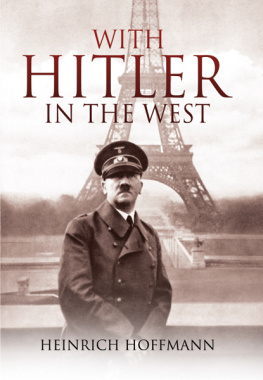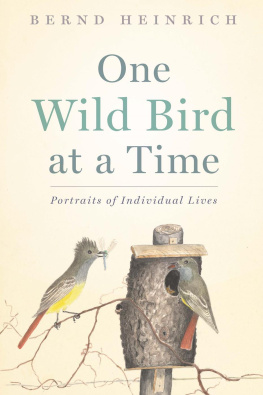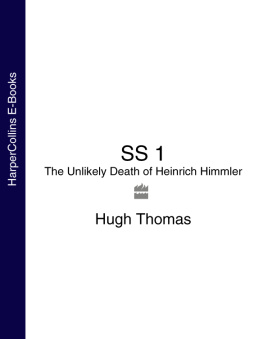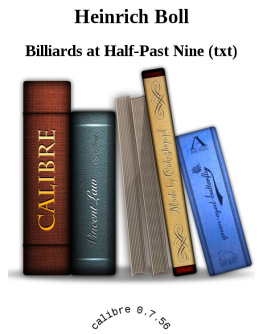Heinrich Wolfflin - Principles of Art History
Here you can read online Heinrich Wolfflin - Principles of Art History full text of the book (entire story) in english for free. Download pdf and epub, get meaning, cover and reviews about this ebook. year: 2012, publisher: Dover Publications, genre: Art. Description of the work, (preface) as well as reviews are available. Best literature library LitArk.com created for fans of good reading and offers a wide selection of genres:
Romance novel
Science fiction
Adventure
Detective
Science
History
Home and family
Prose
Art
Politics
Computer
Non-fiction
Religion
Business
Children
Humor
Choose a favorite category and find really read worthwhile books. Enjoy immersion in the world of imagination, feel the emotions of the characters or learn something new for yourself, make an fascinating discovery.
- Book:Principles of Art History
- Author:
- Publisher:Dover Publications
- Genre:
- Year:2012
- Rating:3 / 5
- Favourites:Add to favourites
- Your mark:
- 60
- 1
- 2
- 3
- 4
- 5
Principles of Art History: summary, description and annotation
We offer to read an annotation, description, summary or preface (depends on what the author of the book "Principles of Art History" wrote himself). If you haven't found the necessary information about the book — write in the comments, we will try to find it.
Principles of Art History — read online for free the complete book (whole text) full work
Below is the text of the book, divided by pages. System saving the place of the last page read, allows you to conveniently read the book "Principles of Art History" online for free, without having to search again every time where you left off. Put a bookmark, and you can go to the page where you finished reading at any time.
Font size:
Interval:
Bookmark:
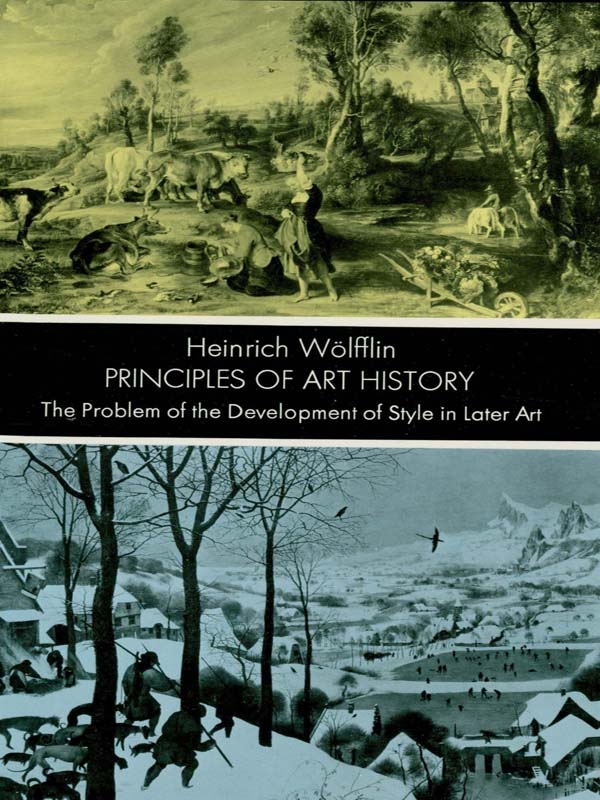
F. BRUCKMANN, A.-G., MNICH
Die Kunst Albrecht Drers
Die Klassische Kunst
Renaissance und Barock
Italien und das Deutsche Formgefhl
G. P. PUTNAMS SONS
The Art of the Italian Renaissance
I T is no felicitous metaphor to call art the mirror of life, and a survey which takes the history of art essentially as the history of expression runs the risk of disastrous one-sidedness. We can contribute what we like to the question of subject matter, we must still reckon with the fact that the expressional organism did not always remain the same. Naturally, in the course of time, art manifests very various contents, but that does not determine the variation in its appearance: speech itself changes as well as grammar and syntax. Not only that it is differently pronounced in different placesthat we can easily admitbut it has absolutely its own development, and the most powerful individual talent has only been able to win from it a definite form of expression which does not rise very far above general possibilities. Here too the objection will certainly be made that that goes without saying, the means of expression were only gradually achieved. That is not what is meant here. Even when the means of expression are fully developed, the type varies. To put it differentlythe content of the world does not crystallise for the beholder into an unchanging form. Or, to return to the first metaphor, beholding is just not a mirror which always remains the same, but a living power of apprehension which has its own inward history and has passed through many stages.
This change of the form of beholding in the contrast between the classic and baroque types has here been described. It is not the art of the sixteenth and seventeenth centuries which was to be analysedthat is something richer and more livingonly the schema and the visual and creative possibilities within which art remained in both cases. To illustrate this, we could naturally only proceed by referring to the individual work of art, but everything which was said of Raphael and Titian, of Rembrandt and Velasquez, was only intended to elucidate the general course of things, not to bring to light the special value of the picture chosen. That would have required more extensive and more exact treatment. But, on the other hand, it is inevitable to refer to important works: the tendency is, after all, most clearly to be seen in the most outstanding works as the real pioneers.
Another question is how far we have the right to speak of two types at all. Everything is transition and it is hard to answer the man who regards history as an endless flow. For us, intellectual self-preservation demands that we should classify the infinity of events with reference to a few results.
In its breadth, the whole process of the transformation of the imagination has been reduced to five pairs of concepts. We can call them categories of beholding without danger of confusion with Kants categories. Although they clearly run in one direction, they are still not derived from one principle. (To a Kantian mentality they would look merely adventitious.) It is possible that still other categories could be set upI could not discover themand those given here are not so closely related that they could not be imagined in a partly different combination. For all that, to a certain extent they involve each other and, provided we do not take the expression literally, we could call them five different views of one and the same thing. The linear-plastic is connected with the compact space-strata of the plane-style, just as the tectonically self-contained has a natural affinity with the independence of the component parts and perfected clarity. On the other hand, incomplete clarity of form and the unity of effect with depreciated component parts will of itself combine with the a-tectonic flux and find its place best in the impressionist-painterly conception. And if it looks as though the recessional style did not necessarily belong to the same family, we can reply that its recessional tensions are exclusively based on visual effects which appeal to the eye only and not to plastic feeling.
We can make the test. Among the reproductions illustrated there is hardly one which could not be utilised from any of the other points of view.
All five pairs of concepts can be interpreted both in the decorative and in the imitative sense. There is a beauty of the tectonic and a truth of the tectonic, a beauty of the painterly and a definite content of the world which is manifested in the painterly, and only in the painterly, style, and so on. But we will not forget that our categories are only formsforms of apprehension and representationand that they can therefore have no expressional content in themselves. Here it is only a question of the schema within which a definite beauty can manifest itself and only of the vessel in which impressions of nature can be caught and retained. If the apprehensional form of an epoch is tectonic in type, as in the sixteenth century, that is by no means sufficient to explain the tectonic strength of the picture and figures of a Michelangelo and a Fra Bartolommeo. There is a bony feeling which must first have poured its marrow into the schema. That of which we speak was in its (relative) expressionlessness a matter of course for mankind. When Raphael sketched his compositions for the Villa Farnesina there was no other possibility of thought than that the figures in closed form had to fill the surfaces, and when Rubens designed the procession of children with the wreath of fruit the open formthe figures set in space without filling itwas just as much the only possibility, although in both cases the same theme of grace and joy was to be treated.
False judgments enter art history if we judge from the impression which pictures of different epochs, placed side by side, make on us. We must not interpret their various types of expression merely in terms of stimmung. They speak a different language. Thus it is false to attempt an immediate comparison of a Bramante with a Bernini in architecture from the point of view of stimmung. Bramante does not only incorporate a different ideal: his mode of thought is from the outset differently organised from Berninis. Classic architecture appeared to the seventeenth century as no longer quite living. That is not to be attributed to the repose and clarity of the atmosphere but to the way in which it is expressed. Contemporaries of baroque were also able to dwell in the same spheres of feeling and yet be modern, as we can see from French buildings of the seventeenth century.
Every form of beholding and representation will of its very nature incline to one side, to a certain beauty, to a certain type of presentment of nature (we are about to speak of this), and in so far it again appears false to call the categories expressionless. Yet it should not be difficult to eliminate the misunderstanding. What is meant is the form in which the living is seen, without this life being already determined by its more specific content.
Whether a picture or a building, a figure or an ornament, is at issue, the impression of the living has its roots, independently of a special tone of feeling, in a different schema in the two cases. But the readjustment of seeing cannot quite be detached from a different orientation of interest. Even when no definite content of feeling is in question, the value and meaning of being is sought in a different sphere. For classic contemplation the essence lies in the solid, enduring figure which is delineated with the greatest definiteness and all-round distinctness; for painterly contemplation the interest and warrant of life lies in movement. The sixteenth century, of course, did not quite abandon the motive of movement, and a drawing by Michelangelo must in this point have seemed unsurpassable, yet only the seeing which aimed at mere appearance, painterly seeing, gave representation the means of producing the impression of movement in the sense of change. That is the decisive contrast between classic and baroque art. Classic ornament has its meaning in the form as it is, baroque ornament changes under the spectators eyes. Classic colouring is a given harmony of separate colours, baroque colouring is always a movement of colour and is bound up with the impression of becoming. In another sense than of the classic portrait we should have to say of baroque that not the eye but the look was its content, and not the lips but the breath. The body breathes. The whole picture space is filled with movement.
Font size:
Interval:
Bookmark:
Similar books «Principles of Art History»
Look at similar books to Principles of Art History. We have selected literature similar in name and meaning in the hope of providing readers with more options to find new, interesting, not yet read works.
Discussion, reviews of the book Principles of Art History and just readers' own opinions. Leave your comments, write what you think about the work, its meaning or the main characters. Specify what exactly you liked and what you didn't like, and why you think so.



